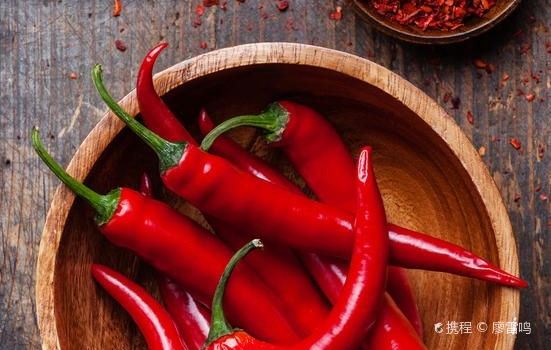The Big Apple Coffee
No comments yet
AU$6

+216 71 193 601
What travelers say:

Looking at the strings and boxes of chili peppers, I think of Sichuan cuisine. In fact, chili peppers originated in Mexico. Since more than 8,000 years ago, chili peppers have been used as cooking food and have become part of the American diet, but at that time they were only wild chili peppers. More than 6,000 years ago, chili peppers were first domesticated and cultivated by Indians in southeastern Mexico. From Mexico to Peru, ancient Indians also gradually domesticated chili peppers in different regions.
Although chili peppers have been cultivated by the indigenous people of the American continent for thousands of years, due to the long distance between the American continent and other continents, until the 15th century, people in other continents not only had not tasted chili peppers, but had not even heard of them. In 1492, during the Age of Exploration in the Middle Ages, Columbus, a pioneer of geographical discoveries and born in Genoa, Italy, landed on the American continent. When he discovered chili peppers, he thought it was the pepper that Europe was craving. On January 1, 1493, Columbus recorded his discovery in the Caribbean in his diary: "The hot pepper used by the local Indians as a seasoning is richer and more valuable than black pepper or melegueta pepper (African paradise pepper)." Among them, "hot pepper" is the pepper he mistakenly thought he was looking for, and melegueta pepper is a ginger spice produced in Africa. When Columbus brought peppers back to Europe, the Mediterranean region first began to grow peppers and soon liked the taste of peppers. However, the final globalization of peppers may be attributed to the Portuguese. The Portuguese trading fleet used peppers as the main force of their global spice and seasoning trade. When they established their first colony in southern India, they brought peppers and later spread peppers to other places. Peppers can be dried, and storage and transportation are very convenient. This feature made peppers quickly spread all over the world. There is no record of peppers in the "Compendium of Materia Medica" written by Li Shizhen, the medicine saint of the Ming Dynasty, because peppers were brought to China nearly 100 years after Columbus brought them from the Americas to Europe. When peppers were first introduced to China after 1591, they were only used as ornamental flowers and were not eaten. Peppers were most likely to arrive at the Macau Peninsula by sea through Portuguese merchants, and then spread to coastal areas of China, and then gradually spread to the inland and west. In 1684, they arrived in Hunan and Sichuan, and finally spread to other parts of China. To this day, many places in China still call peppers "sea peppers", which also indirectly proves that peppers came from the sea.
After peppers arrived in coastal areas of China, they were not immediately accepted by the Chinese as food. It was not until the end of the Ming Dynasty (1644) that natural disasters and wars caused food shortages, and peppers really entered the Chinese diet. According to historical records, the first to eat peppers was Guizhou, and the records of eating spicy food in other provinces were later than Guizhou. Everyone knows that Sichuan is a large basin. Due to climate reasons, Sichuan is relatively humid. Since peppers entered China, Sichuan people accidentally discovered that eating peppers can have a dehumidifying effect, so one person spread ten, ten spread a hundred, and many Sichuan people began to eat peppers. Over time, Sichuan people have developed a habit of liking to eat peppers. By now, most Sichuanese have almost reached the point where they cannot live without spicy food.
Chili peppers are not native to China, but are imported from Mexico. They are not "eaten since ancient times" as many people believe. Chili peppers were not originally used for eating, but as ornamental plants. Later, they were used by the ancients to replace salt as a seasoning and as an auxiliary ingredient in food, and then gradually became a popular seasoning.
More
Reviews of The Big Apple Coffee
Some reviews may have been translated by Google Translate
0/5
All (1)
Latest
Photo reviews (1)
Looking at the strings and boxes of chili peppers, I think of Sichuan cuisine. In fact, chili peppers originated in Mexico. Since more than 8,000 years ago, chili peppers have been used as cooking food and have become part of the American diet, but at that time they were only wild chili peppers. More than 6,000 years ago, chili peppers were first domesticated and cultivated by Indians in southeastern Mexico. From Mexico to Peru, ancient Indians also gradually domesticated chili peppers in different regions. Although chili peppers have been cultivated by the indigenous people of the American continent for thousands of years, due to the long distance between the American continent and other continents, until the 15th century, people in other continents not only had not tasted chili peppers, but had not even heard of them. In 1492, during the Age of Exploration in the Middle Ages, Columbus, a pioneer of geographical discoveries and born in Genoa, Italy, landed on the American continent. When he discovered chili peppers, he thought it was the pepper that Europe was craving. On January 1, 1493, Columbus recorded his discovery in the Caribbean in his diary: "The hot pepper used by the local Indians as a seasoning is richer and more valuable than black pepper or melegueta pepper (African paradise pepper)." Among them, "hot pepper" is the pepper he mistakenly thought he was looking for, and melegueta pepper is a ginger spice produced in Africa. When Columbus brought peppers back to Europe, the Mediterranean region first began to grow peppers and soon liked the taste of peppers. However, the final globalization of peppers may be attributed to the Portuguese. The Portuguese trading fleet used peppers as the main force of their global spice and seasoning trade. When they established their first colony in southern India, they brought peppers and later spread peppers to other places. Peppers can be dried, and storage and transportation are very convenient. This feature made peppers quickly spread all over the world. There is no record of peppers in the "Compendium of Materia Medica" written by Li Shizhen, the medicine saint of the Ming Dynasty, because peppers were brought to China nearly 100 years after Columbus brought them from the Americas to Europe. When peppers were first introduced to China after 1591, they were only used as ornamental flowers and were not eaten. Peppers were most likely to arrive at the Macau Peninsula by sea through Portuguese merchants, and then spread to coastal areas of China, and then gradually spread to the inland and west. In 1684, they arrived in Hunan and Sichuan, and finally spread to other parts of China. To this day, many places in China still call peppers "sea peppers", which also indirectly proves that peppers came from the sea. After peppers arrived in coastal areas of China, they were not immediately accepted by the Chinese as food. It was not until the end of the Ming Dynasty (1644) that natural disasters and wars caused food shortages, and peppers really entered the Chinese diet. According to historical records, the first to eat peppers was Guizhou, and the records of eating spicy food in other provinces were later than Guizhou. Everyone knows that Sichuan is a large basin. Due to climate reasons, Sichuan is relatively humid. Since peppers entered China, Sichuan people accidentally discovered that eating peppers can have a dehumidifying effect, so one person spread ten, ten spread a hundred, and many Sichuan people began to eat peppers. Over time, Sichuan people have developed a habit of liking to eat peppers. By now, most Sichuanese have almost reached the point where they cannot live without spicy food. Chili peppers are not native to China, but are imported from Mexico. They are not "eaten since ancient times" as many people believe. Chili peppers were not originally used for eating, but as ornamental plants. Later, they were used by the ancients to replace salt as a seasoning and as an auxiliary ingredient in food, and then gradually became a popular seasoning.